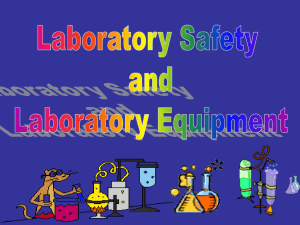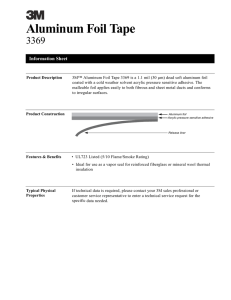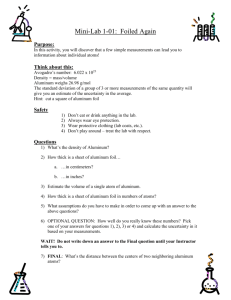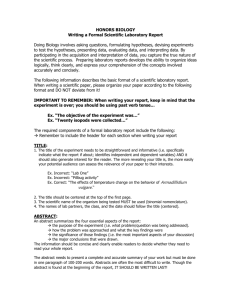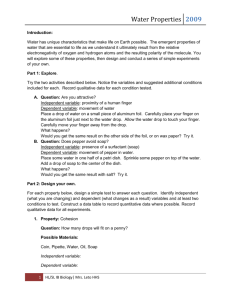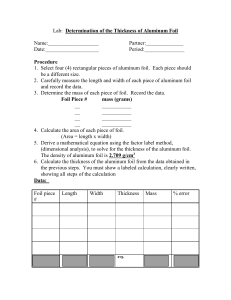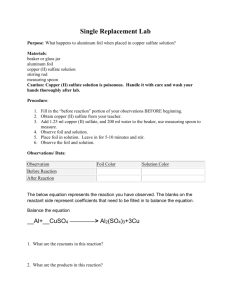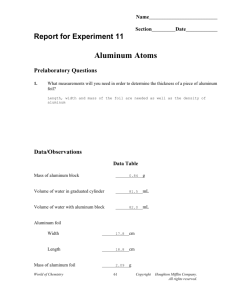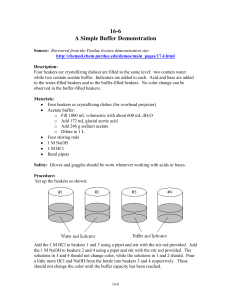Teacher Lab Info
advertisement
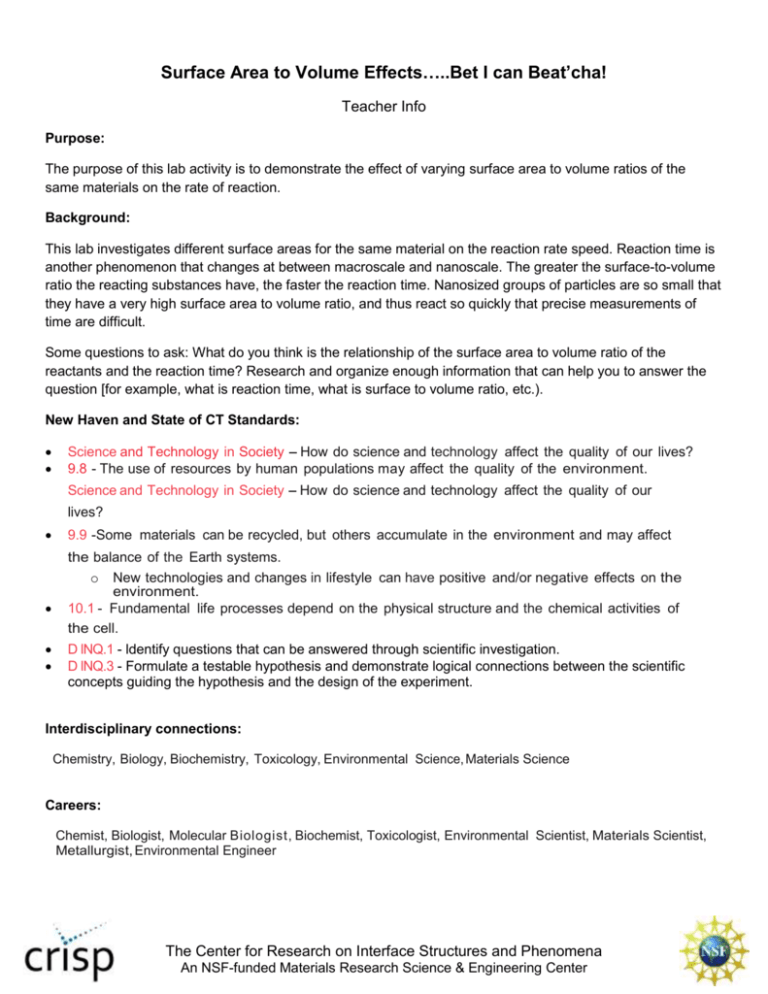
Surface Area to Volume Effects…..Bet I can Beat’cha! Teacher Info Purpose: The purpose of this lab activity is to demonstrate the effect of varying surface area to volume ratios of the same materials on the rate of reaction. Background: This lab investigates different surface areas for the same material on the reaction rate speed. Reaction time is another phenomenon that changes at between macroscale and nanoscale. The greater the surface-to-volume ratio the reacting substances have, the faster the reaction time. Nanosized groups of particles are so small that they have a very high surface area to volume ratio, and thus react so quickly that precise measurements of time are difficult. Some questions to ask: What do you think is the relationship of the surface area to volume ratio of the reactants and the reaction time? Research and organize enough information that can help you to answer the question [for example, what is reaction time, what is surface to volume ratio, etc.). New Haven and State of CT Standards: Science and Technology in Society - How do science and technology affect the quality of our lives? 9.8 - The use of resources by human populations may affect the quality of the environment. Science and Technology in Society - How do science and technology affect the quality of our lives? 9.9 -Some materials can be recycled, but others accumulate in the environment and may affect the balance of the Earth systems. o New technologies and changes in lifestyle can have positive and/or negative effects on the environment. 10.1 - Fundamental life processes depend on the physical structure and the chemical activities of the cell. D lNQ.1 - ldentify questions that can be answered through scientific investigation. D lNQ.3 - Formulate a testable hypothesis and demonstrate logical connections between the scientific concepts guiding the hypothesis and the design of the experiment. Interdisciplinary connections: Chemistry, Biology, Biochemistry, Toxicology, Environmental Science, Materials Science Careers: Chemist, Biologist, Molecular Biologist, Biochemist, Toxicologist, Environmental Scientist, Materials Scientist, Metallurgist, Environmental Engineer The Center for Research on Interface Structures and Phenomena An NSF-funded Materials Research Science & Engineering Center Safety: Wear goggles during this lab investigation. Don't eat or drink anything at your lab station. Do not flush solution into the drain. Follow teacher instructions. Use caution when handling glassware. Cu2+ is a heavy metal and must be disposed of properly according to state and federal regulations. Lab & Materials: Design an experiment you can do in the lab in order to investigate the answer to your question. List the materials you would use and explain the procedure you will follow. Copper (ll) Chloride Dihydrate [CuCl2 • 2H2O] crystals (MSDS in kit & below) Teaspoon (4) Glass stirring rod (4) 100 mL beakers (8) Aluminum foil,2 inches x 2 inches (8) Tongs (4) Paper towels and a solid waste disposal bottle Clock, timer, or watch with a second hand display Water Procedure: 1. Fill each of the 100 mL beakers about half full with water. 2. Add l teaspoon of Copper (ll) Chloride Dihydrate [CuCl2o211rO] crystals to each of the beakers of water. Mix well with the glass stirring rod. 3. Form 1 piece of aluminum foil into a loose ball; leave the other piece of aluminum foil as is. 4. Put each of the aluminum foil pieces into separate beakers. 5. On your lab sheet, record the time that it takes for each reaction to be at least 80% complete. 6. Dispose of solutions properly. Waste bottles are included in the kit for liquid waste. NOTE: Copper (II) [Cu2+] is a heavy metal and must be disposed of properly according to local and state Regulations (see MSDS-waste bottles are included in the kit. If the bottles are filled and labeled, CRISP lab personnel will properly dispose of the materials). The Center for Research on Interface Structures and Phenomena An NSF-funded Materials Research Science & Engineering Center
